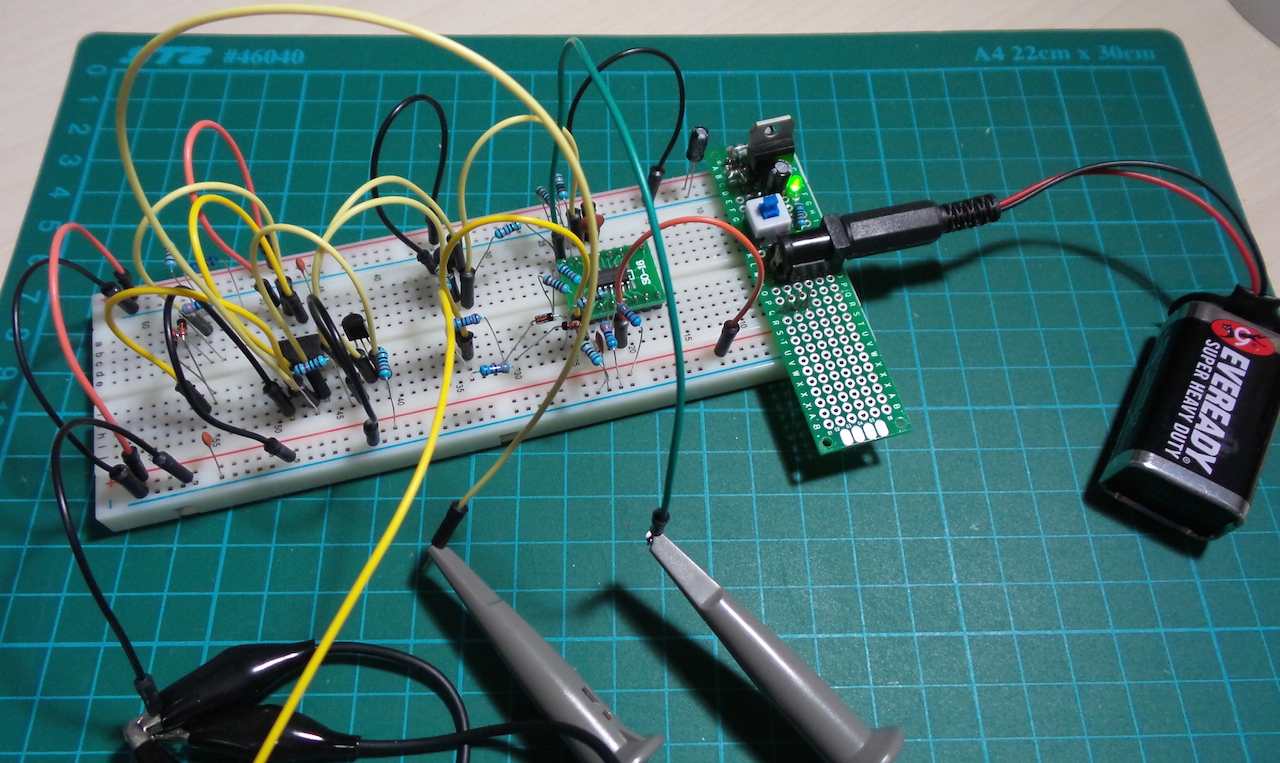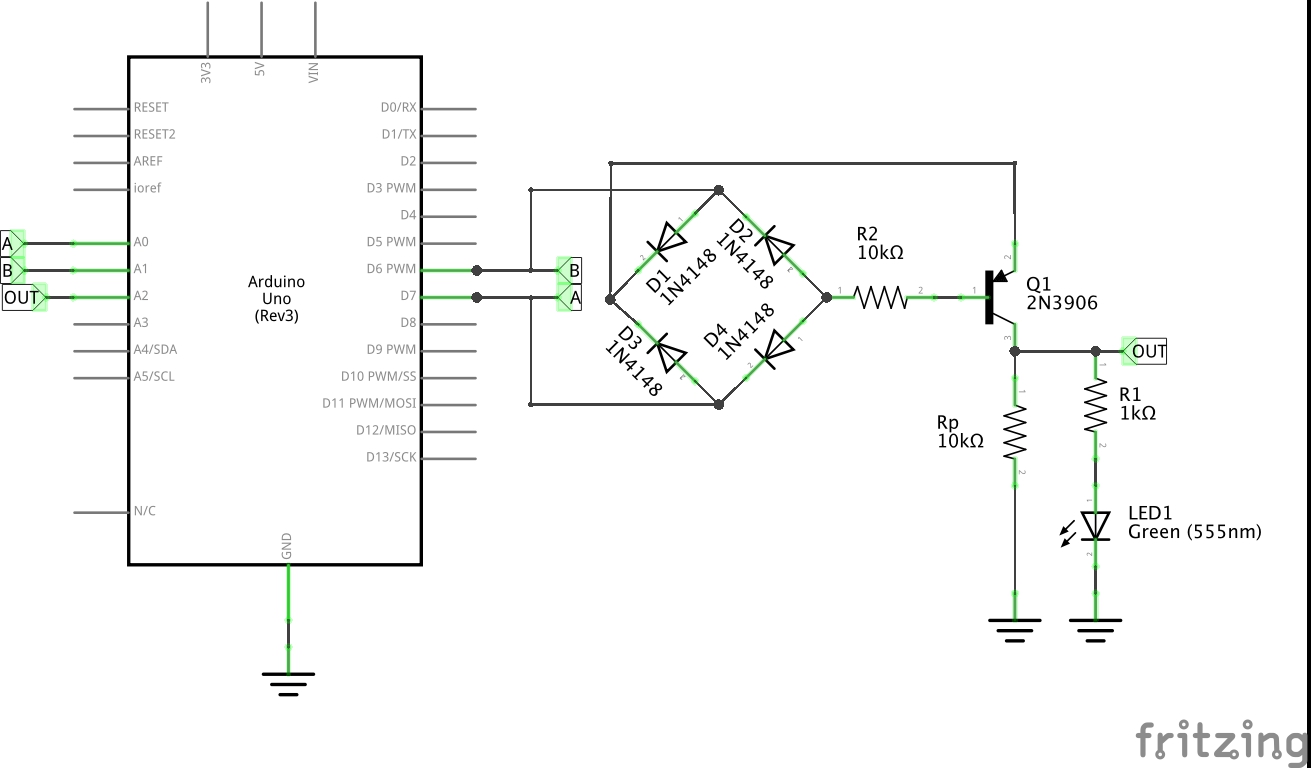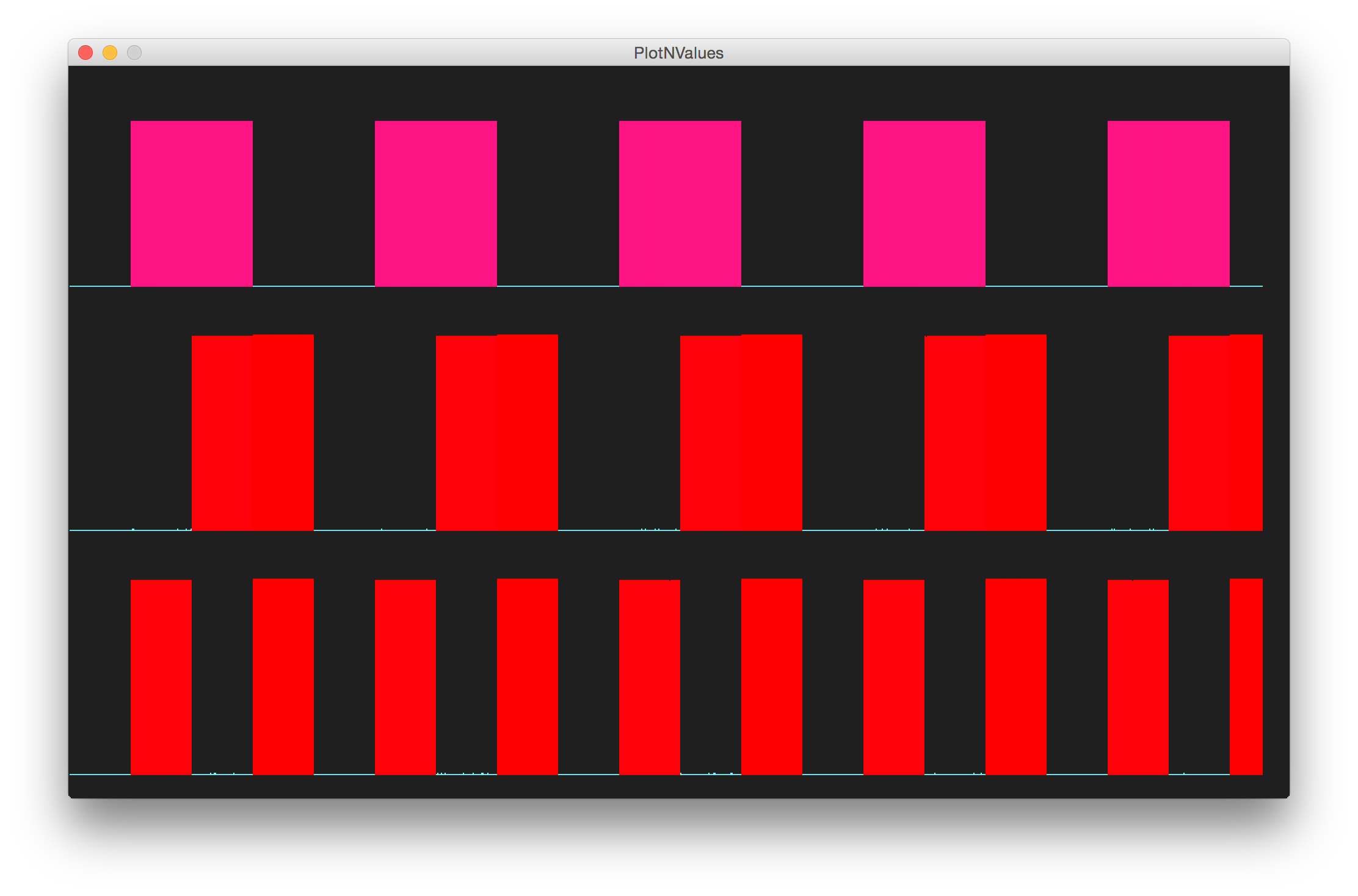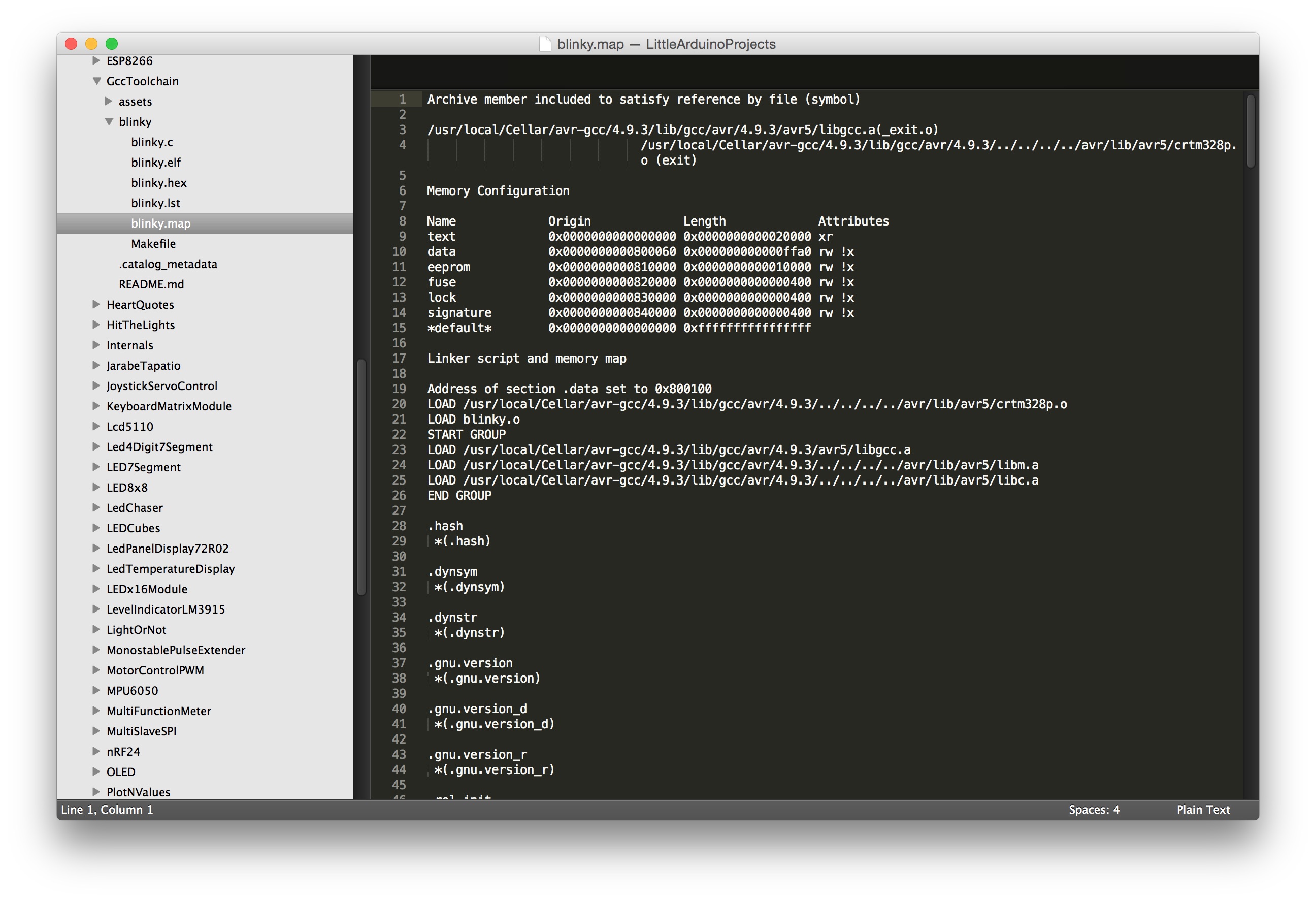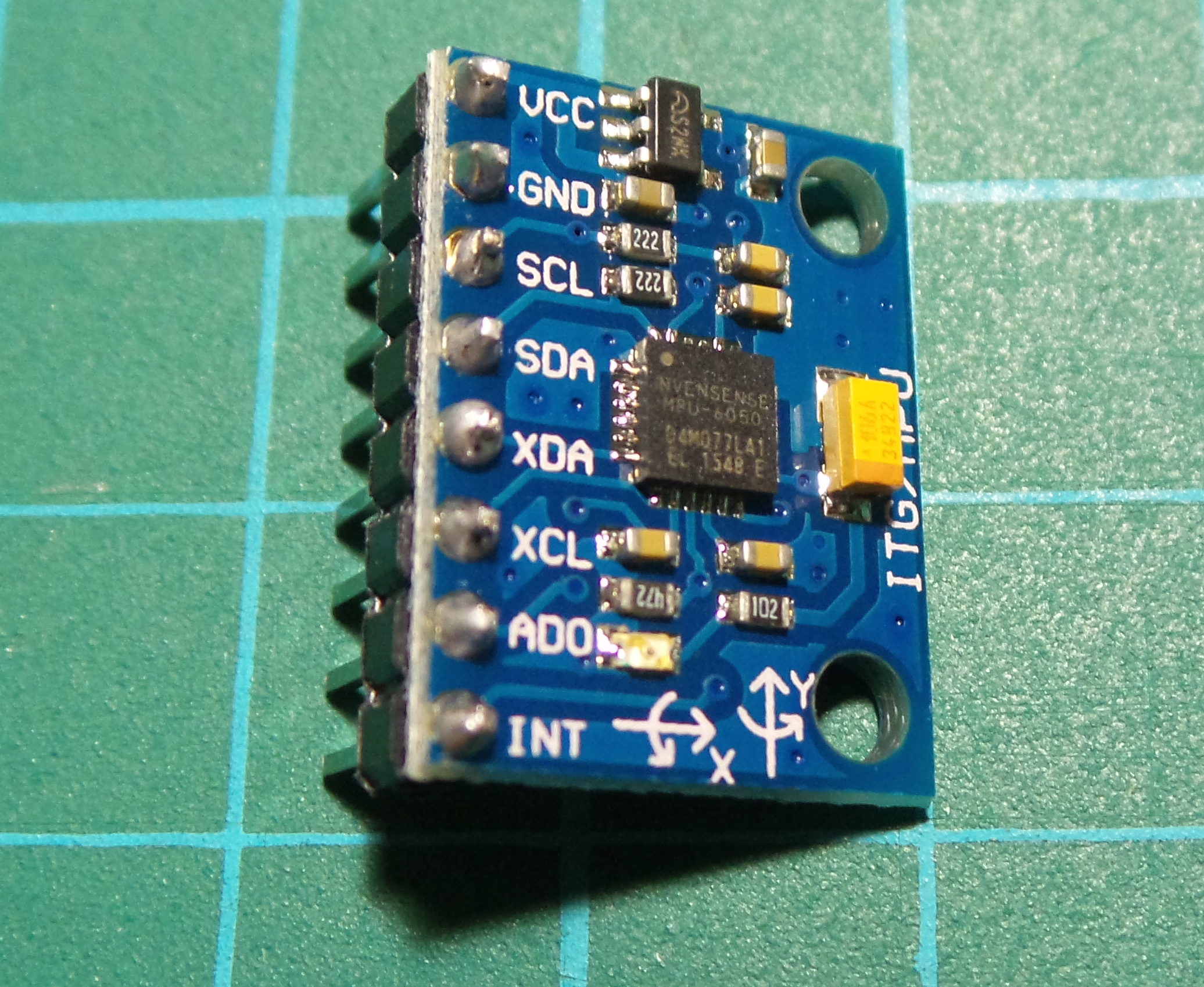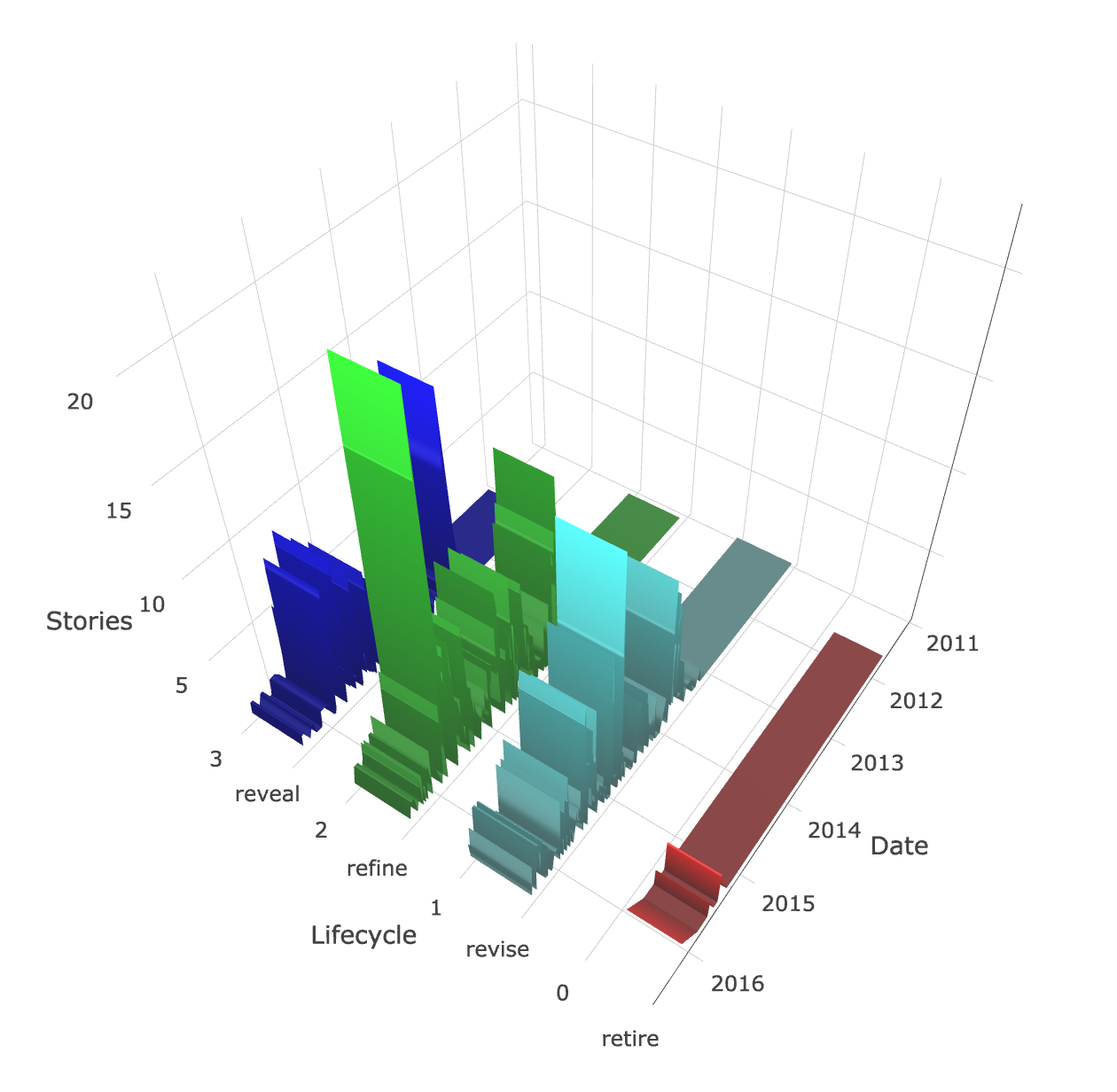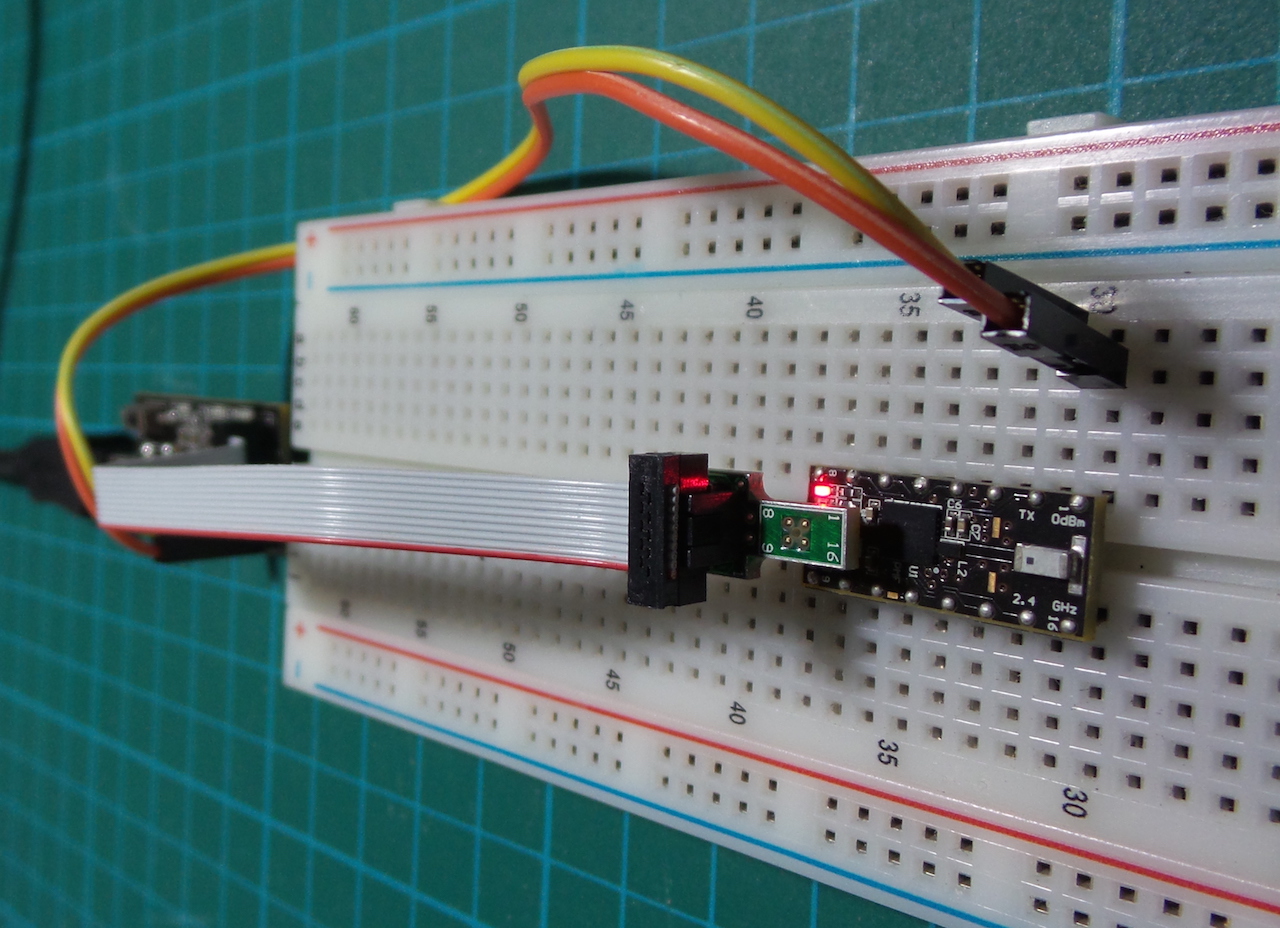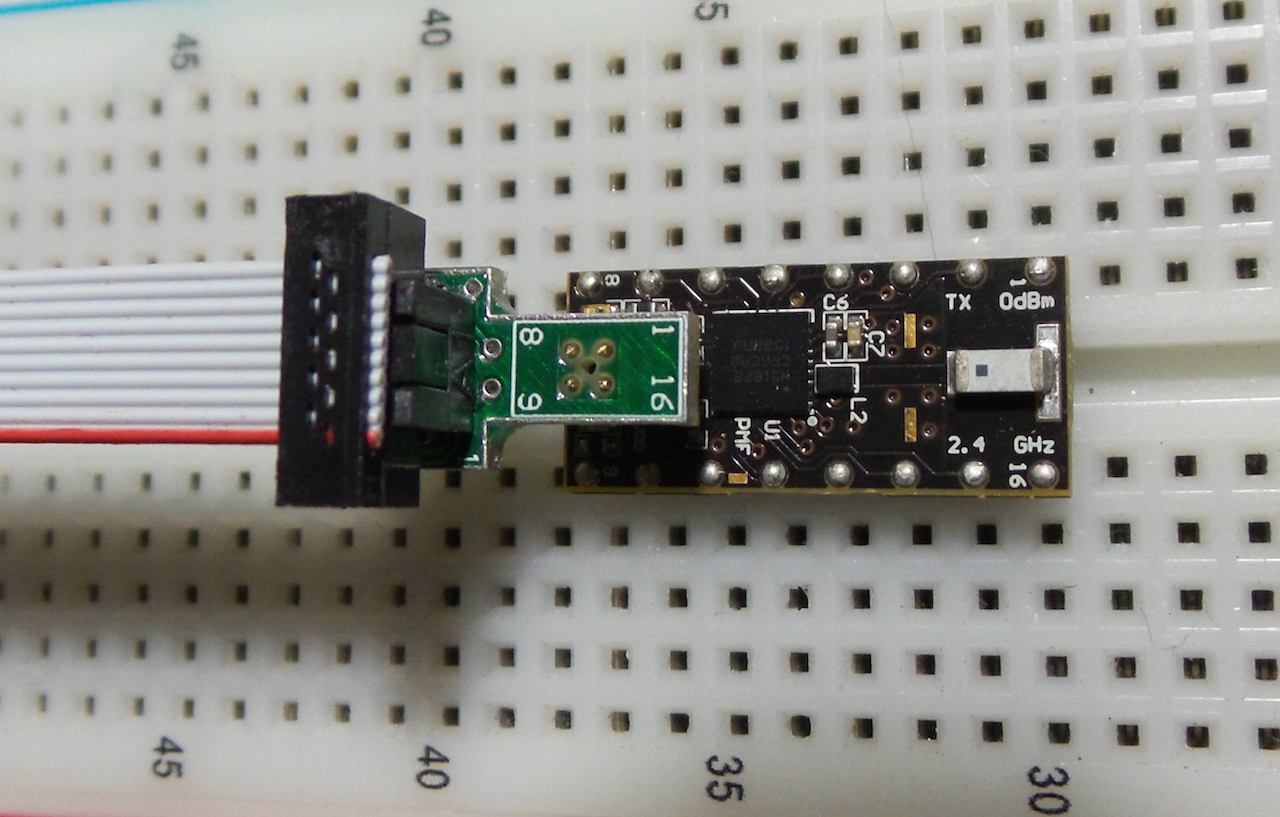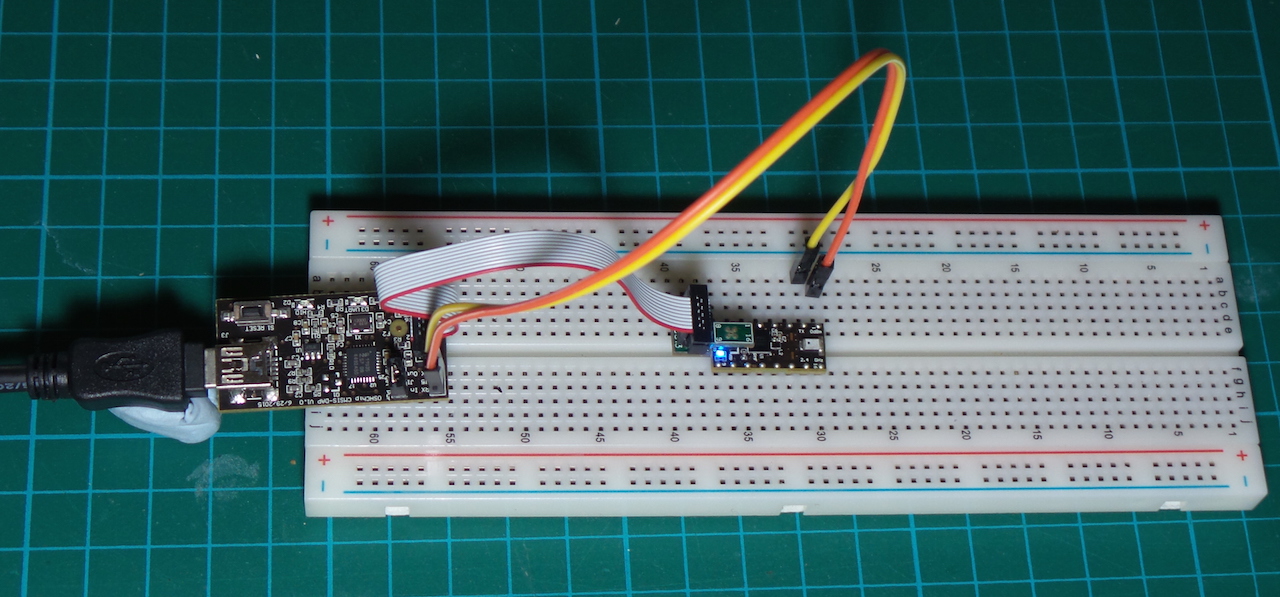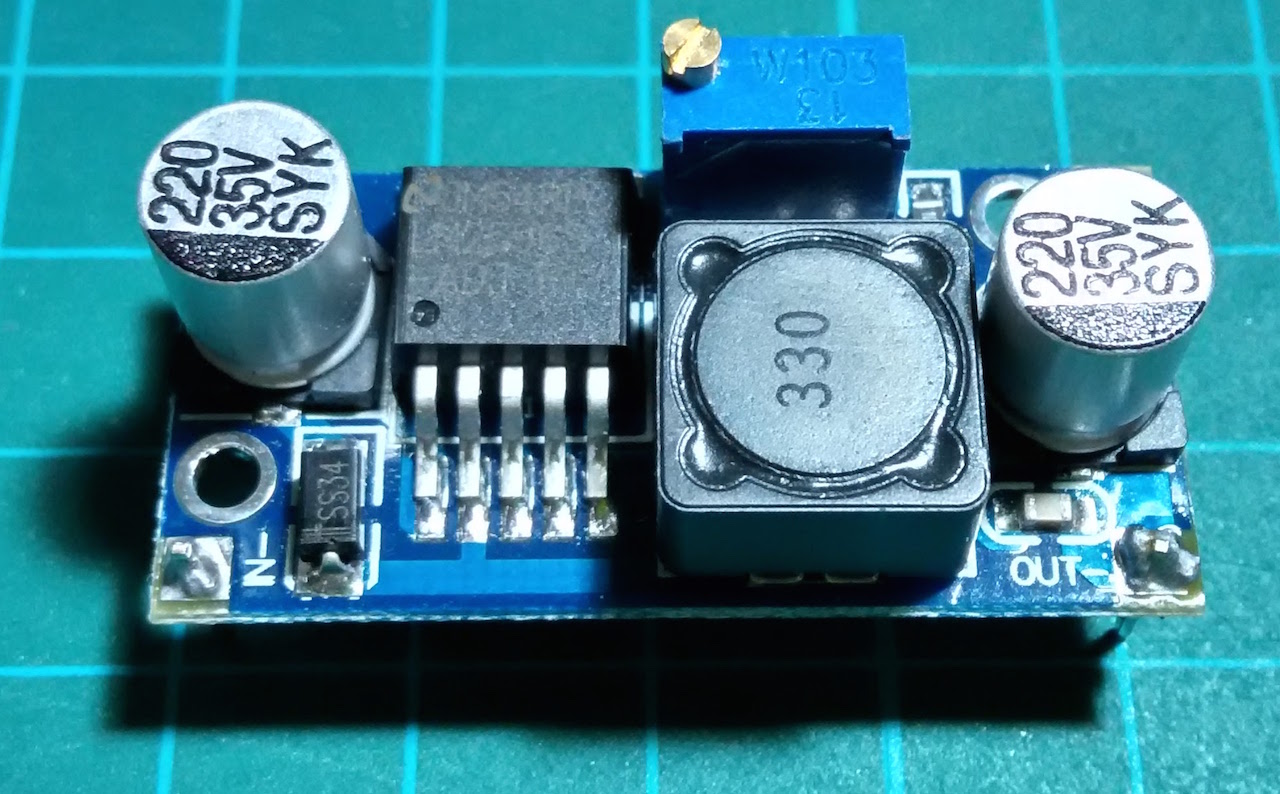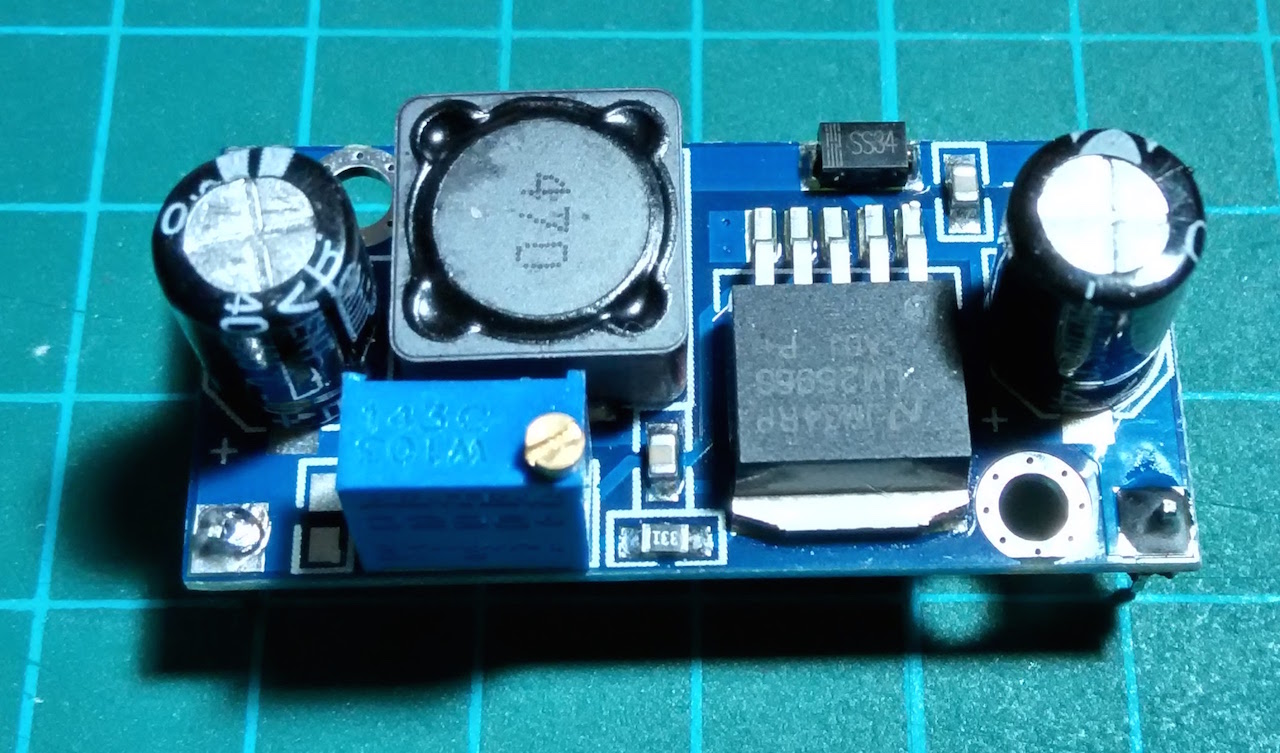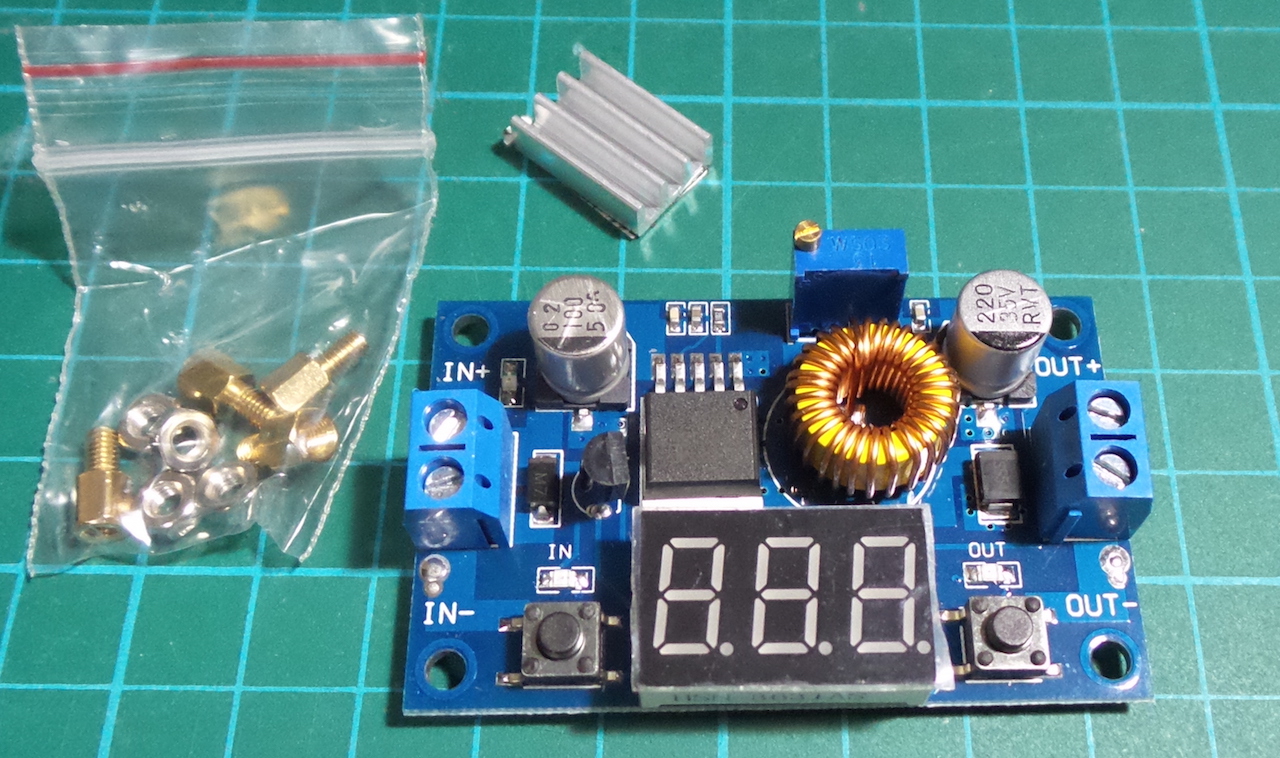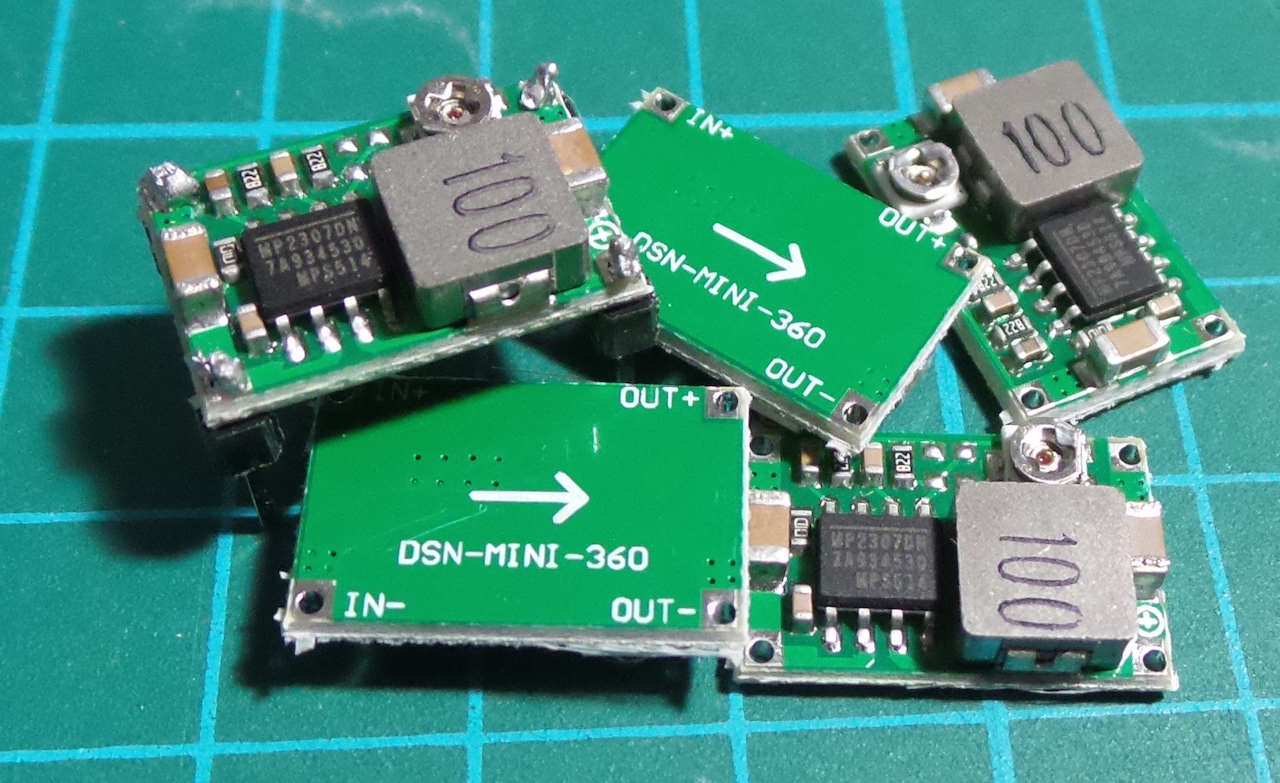Seeing this post? Then you've landed on one of my archived blogs.
I've since consolidated all the content posted here on a new site at blog.tardate.com.
It is actually built with Jekyll and the sources are actually freely available on GitHub.
Tardate 2016
My occasional technical diary of thoughts, tips, and tools from some of the more interesting things I'm playing around with at the time. That means all things Web, Open Source, Polyglot-programming, Electronics and Data, or just my latest rant.. who knows!
Sunday, February 05, 2017
Friday, August 26, 2016
LittleArduinoProjects#222 Stair-step Generator
Once again I'm inspired to go and build a circuit by yet another great tutorial from w2aew.
This circuit generates a stairstep waveform by an ingenious combination of 3 circuit elements:
As always, all notes, schematics and code are in the Little Electronics & Arduino Projects repo on GitHub.
This circuit generates a stairstep waveform by an ingenious combination of 3 circuit elements:
- a "high" (265Hz) frequency pulse (555 timer) provides the charge to step-up the output
- the step pulse feeds an OpAmp pulse integrator/accumulator
- a low frequency pulse generator (OpAmp oscillator) provides the reset pulse that clears the accumulator and resets the 555
As always, all notes, schematics and code are in the Little Electronics & Arduino Projects repo on GitHub.
Friday, August 05, 2016
LittleArduinoProjects#221 XOR with Resistor-Transistor Logic
An XOR may be constructed using combinatorial logic: an OR ANDed with a NAND. But can it be done with even more basic discrete components?
This circuit uses a diode-bridge and a single transistor - quite neat. It does mean however that there is no output buffer, in fact the output is powered from the inputs. I'm using an Arduino to drive the circuit and capture the output plot.
As always, all notes, schematics and code are in the Little Electronics & Arduino Projects repo on GitHub.
Monday, July 25, 2016
LittleArduinoProjects#220 Arduino gcc toolchain
The Arduino IDE is the most convenient way to get started with Arduino, but it does obscure the underlying mechanics of building software for an Arduino.
How to do it from scratch? This is my experiement and guide to building software for an Arduino from the command line. I use a Mac and homebrew, so it is somewhat MacOSX-specific.
As always, all notes, schematics and code are in the Little Electronics & Arduino Projects repo on GitHub.
How to do it from scratch? This is my experiement and guide to building software for an Arduino from the command line. I use a Mac and homebrew, so it is somewhat MacOSX-specific.
As always, all notes, schematics and code are in the Little Electronics & Arduino Projects repo on GitHub.
Wednesday, July 20, 2016
LittleArduinoProjects#219 DS18S20 1-Wire Reading
Another way to measure temperatures, this time the DS18S20 - an inexpensive 1-Wire digital thermometer with a range of -55°C to +125°C, at ±0.5°C accuracy from -10°C to +85°C.
It comes in TO-92 packaging and may be powered directly (using three pins), or take parasitic power from the data line (using two pins). This makes it ideal for pin-starved microcontrollers that need a decent ambient temperature reading. In this project, I'm just exercising the sensor with a simple Arduino sketch.
As always, all notes, schematics and code are in the Little Electronics & Arduino Projects repo on GitHub.
It comes in TO-92 packaging and may be powered directly (using three pins), or take parasitic power from the data line (using two pins). This makes it ideal for pin-starved microcontrollers that need a decent ambient temperature reading. In this project, I'm just exercising the sensor with a simple Arduino sketch.
As always, all notes, schematics and code are in the Little Electronics & Arduino Projects repo on GitHub.
Labels:
Arduino,
Electronics,
LittleArduinoProjects,
Sensors
Thursday, July 14, 2016
LittleArduinoProjects#218 MPU-6050 3-Axes Accelerometer Gyroscope Module
I'm planning to build a controller that needs motion detection, so got hold of an Invensense MPU-6050 3-Axes Accelerometer Gyroscope Module to see if it would do the trick. The module conveniently operates on 3-5V. All I've done so far is a simple sketch to confirm I can read raw values from the MPU-6050 using the Arduino Wire library.
As always, all notes, schematics and code are in the Little Electronics & Arduino Projects repo on GitHub.
As always, all notes, schematics and code are in the Little Electronics & Arduino Projects repo on GitHub.
Wednesday, July 13, 2016
LittleArduinoProjects#217 Basic AVR-controlled Buck Converter
Buck converters are switching power supplies configured such that the output voltage is lower than the input voltage.
Since the primary components (inductor and capacitor) ideally consume no power, high conversion efficiencies are possible. In practice of course, components are not ideal and there is some power loss. More significant however is any power consumed in the control and feedback circuits.
This circuit is a demonstration and exploration of the basic buck configuration with a fixed load. Since the load is fixed, I have not implemented any feedback control system. Of course there are plenty of buck converter chips and modules on the market and these are so cheap you'd be crazy (or have such precise and unusual requirements) to build your own for a real application. But it's nice to see how they work!
My inspiration for this circuit was DIY Buck Converter by GreatScott! - IMHO the "missing lab" to accompany very good but dry courses such as the Power Electronics Specialisation from University of Colorado Boulder.
As always, all notes, schematics and code are in the Little Electronics & Arduino Projects repo on GitHub.
Since the primary components (inductor and capacitor) ideally consume no power, high conversion efficiencies are possible. In practice of course, components are not ideal and there is some power loss. More significant however is any power consumed in the control and feedback circuits.
This circuit is a demonstration and exploration of the basic buck configuration with a fixed load. Since the load is fixed, I have not implemented any feedback control system. Of course there are plenty of buck converter chips and modules on the market and these are so cheap you'd be crazy (or have such precise and unusual requirements) to build your own for a real application. But it's nice to see how they work!
My inspiration for this circuit was DIY Buck Converter by GreatScott! - IMHO the "missing lab" to accompany very good but dry courses such as the Power Electronics Specialisation from University of Colorado Boulder.
As always, all notes, schematics and code are in the Little Electronics & Arduino Projects repo on GitHub.
Monday, July 11, 2016
LittleArduinoProjects#216 OSHChip driving SPI LED module
How easy is SPI with the OSHChip? I thought I'd find out by first controlling a module that has a very basic SPI-ish slave interface.
I'm using the LEDx16Module that I designed in the KiCad like a Pro course from Tech Explorations. It has dual 74HC595 shift registers that can be driven with SPI to control 16 onboard LEDs.
As always, all notes, schematics and code are in the Little Electronics & Arduino Projects repo on GitHub.
I'm using the LEDx16Module that I designed in the KiCad like a Pro course from Tech Explorations. It has dual 74HC595 shift registers that can be driven with SPI to control 16 onboard LEDs.
As always, all notes, schematics and code are in the Little Electronics & Arduino Projects repo on GitHub.
Sunday, July 10, 2016
Feature Lifecycle Analysis with PivotalTracker
Can you trust your agile planning process to deliver the best result over time?
In an ideal world with a well-balanced and high-performing team, theory says it should all be dandy. But what happens when the real world sticks it's nose in and you need to deal with varying degrees of disfunction?
Feature Lifecycle Analysis is a technique I've been experimenting with for a few years. The idea is to visualise how well we are doing as a team at balancing our efforts between new feature development, refinement, maintenance and ultimately feature deprecation.
If you'd like to find out more, and run an analysis on your own projects, try out the Feature Lifecycle Analysis site. It includes some analysis of two real software development projects, and also a tool for analysing your own PivotalTracker projects.
As always, all notes, schematics and code are on GitHub.
In an ideal world with a well-balanced and high-performing team, theory says it should all be dandy. But what happens when the real world sticks it's nose in and you need to deal with varying degrees of disfunction?
Feature Lifecycle Analysis is a technique I've been experimenting with for a few years. The idea is to visualise how well we are doing as a team at balancing our efforts between new feature development, refinement, maintenance and ultimately feature deprecation.
If you'd like to find out more, and run an analysis on your own projects, try out the Feature Lifecycle Analysis site. It includes some analysis of two real software development projects, and also a tool for analysing your own PivotalTracker projects.
As always, all notes, schematics and code are on GitHub.
Labels:
Agile,
Development,
Product Management,
Project Management,
Scrum
Saturday, July 09, 2016
LittleArduinoProjects#215 OSHChip yotta toolchain
After bruising myself on the raw gcc toolchain - and although I got a program running - I think I want my toolchain to do more of the hard work for me!
So next I tried yotta, the software module system used by mbed OS. Building a simple program using the Official Yotta target for OSHChip and gcc on MacOSX proved quite straight-forward.
As always, all notes, schematics and code are in the Little Electronics & Arduino Projects repo on GitHub.
So next I tried yotta, the software module system used by mbed OS. Building a simple program using the Official Yotta target for OSHChip and gcc on MacOSX proved quite straight-forward.
As always, all notes, schematics and code are in the Little Electronics & Arduino Projects repo on GitHub.
Thursday, July 07, 2016
LittleArduinoProjects#214 OSHChip gcc toolchain
Can I build a program for the OSHChip using the gcc toolchain and Nordic Semi SDK on MacOSX?
Yes..ish!
Here are my notes and scripts for compiling and deploy a simple program, but there remain a few rough edges. There are probably easier ways to do this ... like using the Official Yotta target for OSHChip using gcc ... but I was curious to see how far I could get with just gcc and the Nordic Semi SDK.
As always, all notes, schematics and code are in the Little Electronics & Arduino Projects repo on GitHub.
Yes..ish!
Here are my notes and scripts for compiling and deploy a simple program, but there remain a few rough edges. There are probably easier ways to do this ... like using the Official Yotta target for OSHChip using gcc ... but I was curious to see how far I could get with just gcc and the Nordic Semi SDK.
As always, all notes, schematics and code are in the Little Electronics & Arduino Projects repo on GitHub.
Wednesday, July 06, 2016
LittleArduinoProjects#213 OSHChip blinky
I heard about the OSHChip on the embedded.fm podcast #146 and immediately wanted one!
An ARM Cortex-M0 32 bit micro processor (nRF51822) with 2.4 GHz Radio and other goodies all in a breadboard-compatible DIP16 package .. how could you say no?!
So far, so good. Literally 5 minutes to the first blinking LED, and hours of fun followed .. this is an awesome little package.
As always, all notes, schematics and code are in the Little Electronics & Arduino Projects repo on GitHub.
An ARM Cortex-M0 32 bit micro processor (nRF51822) with 2.4 GHz Radio and other goodies all in a breadboard-compatible DIP16 package .. how could you say no?!
So far, so good. Literally 5 minutes to the first blinking LED, and hours of fun followed .. this is an awesome little package.
As always, all notes, schematics and code are in the Little Electronics & Arduino Projects repo on GitHub.
Tuesday, July 05, 2016
LittleArduinoProjects#212 Stay Creative!
A simple project inspired by Make your own LED Sign VU Meter by GreatScott!. The catch-phrase should be familiar if you subscribe to his channel;-)
It's a VU meter, but rather than doing the "bar graph" thing à la LM3915, it pulses the intensity of all LEDs to the volume of the incoming audio.
As always, all notes, schematics and code are in the Little Electronics & Arduino Projects repo on GitHub.
It's a VU meter, but rather than doing the "bar graph" thing à la LM3915, it pulses the intensity of all LEDs to the volume of the incoming audio.
As always, all notes, schematics and code are in the Little Electronics & Arduino Projects repo on GitHub.
Monday, July 04, 2016
LittleArduinoProjects#211 Buck Converter Modules
There are many super-cheap buck converter modules available, often based on the LM2596S-ADJ. The "BuckConverterModules" project is where I've recorded notes on the individual units I get to see. So far I've tested four. Two perform really well; two are OK but I have my doubts about the specs of the converter chip.
As always, all notes, schematics and code are in the Little Electronics & Arduino Projects repo on GitHub.
As always, all notes, schematics and code are in the Little Electronics & Arduino Projects repo on GitHub.
Subscribe to:
Posts (Atom)












